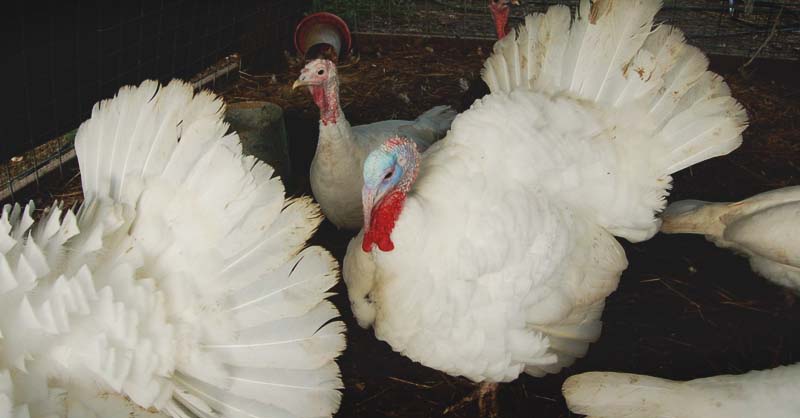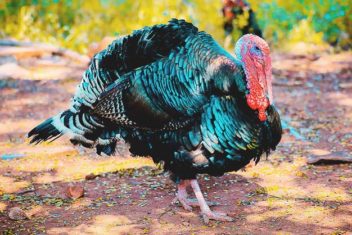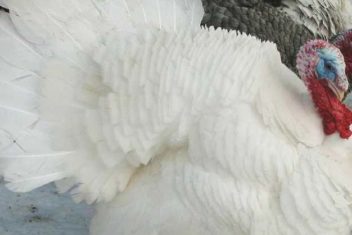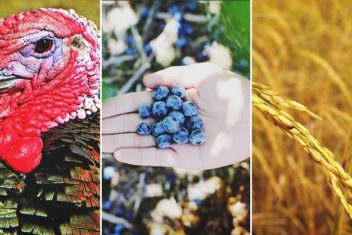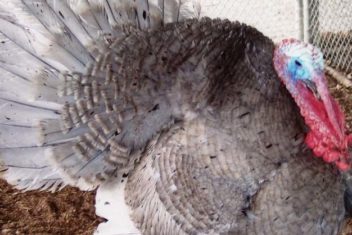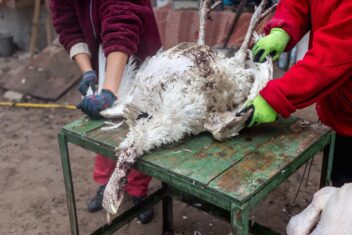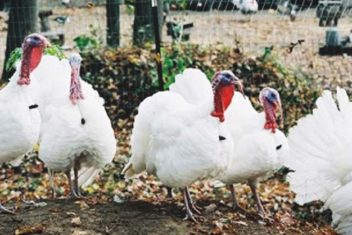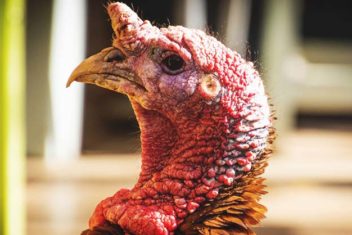Contrary to most turkeys, Midget Whites are not large, unlike the Broad Breasted Whites that Midget Whites were bred after. These turkeys are only a bit larger than the biggest chickens. Unfortunately, Midget White turkeys are not an overly popular variety despite their fantastic attributes for a small scale farmer with limited space.
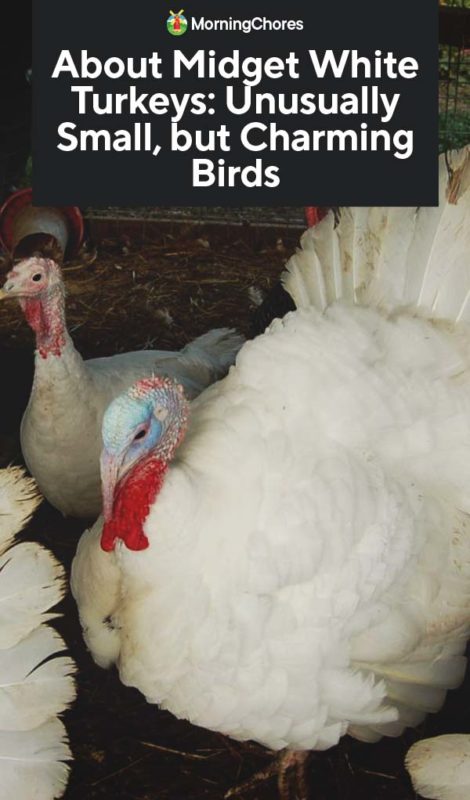
About Midget White Turkeys
In the 1960s, the Midget Whites were bred with the goal of being a Broad Breasted White turkey, but smaller. Dr. J Robert Smythe was mostly responsible for breeding the original stock for the variety at the University of Massachusetts.
It was believed there would be a market for this variety, but once the turkeys were available, they didn’t get the attention initially anticipated.
As the variety was dying out, one of Dr. Smythe’s graduates remembered the Midget White Turkeys and worked to restore it. This former student was named Dr. Bernie Wentworth and is responsible for refining the variety that we know today.
Midget White Turkeys are still in danger of dying out completely, and the only individuals that are working to preserve the variety are private breeders.
Midget White Characteristics
1. Size and Weight
Living up to their title of the smallest turkey variety around, Midget White Turkeys are certainly not as big as one might imagine when picturing a turkey. A full-grown Midget White hen weighs less than some full grown chickens. At a fully mature weight, this turkey hen weighs between 8 and 10 pounds. For toms, full grown weight is approximately 13 pounds.
2. Temperament
One thing these petite turkeys are known for is their docile and friendly dispositions. These birds will even walk right up to you rather boldly and unafraid. Midget White hens also make fantastic mothers and are good at nurturing their young.
3. Meat Production
Despite the fact they are small, Midget Whites are well-reviewed birds for their meat quality. These turkeys have very broad breasts and produce a good amount of sought-after breast meat. Many turkey keepers rank the meat of Midget Whites above meat from other, more popular meat varieties.
4. Egg Production
Egg production from Midget Whites is approximately 60-80 eggs per year. Of course, this isn’t much compared to a chicken’s annual egg production, but it’s enough to hatch a few batches of poults per year to keep your flock going.
Caring for Midget White Turkeys
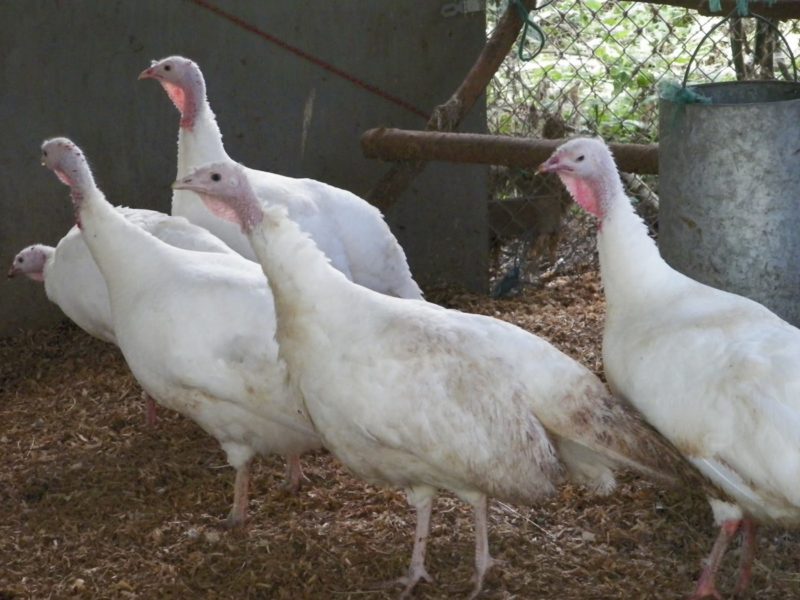
1. Feeding and Nutrition
Young turkeys grow quickly and require more protein than most poultry types. It’s best to feed your poults with a 30% protein starter until your poults are eight weeks old. When your poults are 8 weeks old, switch them to a high-quality flock raiser with 20% protein and high-calorie content.
If you are raising your Midget Whites for meat, you can keep your turkeys on their flock raiser until butchering time. However, if you have turkey hens laying eggs, it is best to put them on game bird laying feed during laying season.
If possible, keep your tom turkeys on flock raiser while your hens eat the laying feed. When your turkeys aren’t producing eggs, you can put the whole flock on their flock raiser.
2. Housing and Fencing
Although most turkeys require a substantial amount of space, Midget Whites are not as demanding in their spatial requirements. Inside your coop, provide a minimum of eight square feet per turkey. It’s also a good idea to keep roosts low to the ground for your turkeys. A perch higher than 18 inches off the ground can give turkeys leg issues when hopping down every morning.
For most turkeys, a minimum of a half acre for every dozen turkeys is recommended. However, for Midget Whites, you can pasture up to 18 full grown turkeys on a half acre.
3. Health Issues and Care
Midget White Turkeys are not any more susceptible to common turkey illnesses than the next variety. However, Blackhead is a common health issue that affects turkeys. It’s important to learn the signs and prevention for Blackhead so you can maintain a healthy flock.
Chickens are not as vulnerable to Blackhead as turkeys are, but they can be carriers of the parasite and get turkeys sick. It’s best to house your turkeys and chickens separately if you own both types of poultry.
In addition to Blackhead, keep a close eye out for internal and external parasites on your turkeys such as worms, mites, and lice. Make sure they have good dust bathing space to help prevent these problems.
A watchful eye on your turkeys to catch any issues early on so you can nip it in the bud is key to maintaining a thriving flock.
4. Breeding
As a Midget White turkey breeder, the biggest thing you will need to be diligent in breeding for, is size. Many breeders tend to get hung up on other aspects of Midget White breeding and end up with larger birds than normal for this variety. Hatch rates for most Midget Whites tend to be around 75-80 according to the Livestock Conservancy.
Midget White Turkey Variety Alternatives
1. Beltsville Small White
This variety is remarkably similar to Midget Whites, and sometimes these two are even exhibited under the same name. Beltsville Small Whites are the next smallest variety of turkey. In addition to their similarities in size, Beltsville Small Whites have similar meat and egg production qualities.
2. Broad Breasted White
Since Midget White turkeys were modeled after Broad Breasted Whites, these two varieties certainly hold many similarities. The biggest differences in these two varieties are their size and rate of growth. Broad Breasted White turkeys weigh up to 20 pounds more than a Midget White and grow quicker. If you want a slightly more commercial variety for your turkey meat, Broad Breasted turkeys might be the way to go.
Did You Know?

Due to many similarities between Midget White and Beltsville Small White turkeys, many people believe they are the same variety. Despite this common and understandable misconception, the two varieties are different and should each be handled as their own unique variety.
Researching these turkeys has made me want to raise some of my own, what about you? The size of these birds makes them very compatible with smaller scale farms. Or, if you want turkey meat but don’t feel like roasting an 18-pound bird, here is a great variety for smaller amounts of meat. It is undoubtedly an underrated turkey variety that many homesteads could greatly benefit from.

